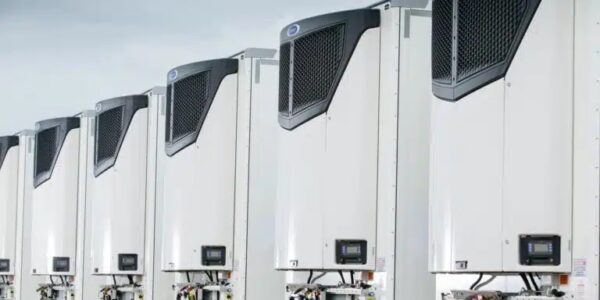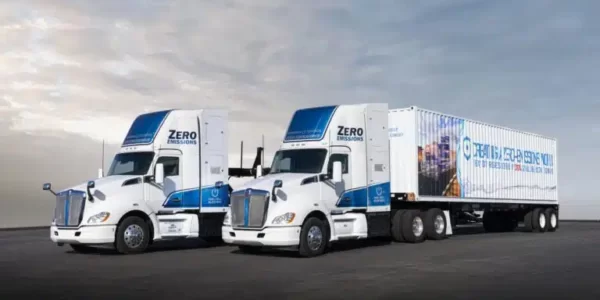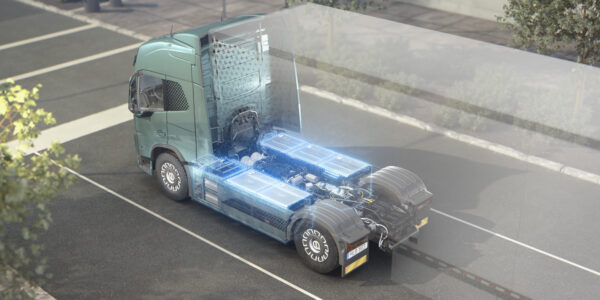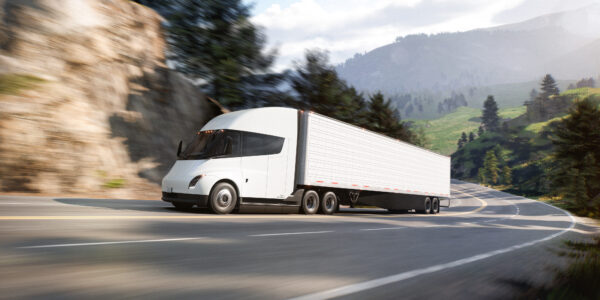Brisbane Truck Show uncovers huge clean transport shift, from utes to road trains
- PostedPublished 24 July 2023
This year’s Brisbane Truck Show featured record numbers of electric, hydrogen and hybrid commercial vehicles on display, from utes to road trains and everything in between.
It was also the largest transport industry event in the Southern Hemisphere with more than 40,000 visitors during the four-day extravaganza, including a strong showing from overseas executives representing global manufacturers and brands.
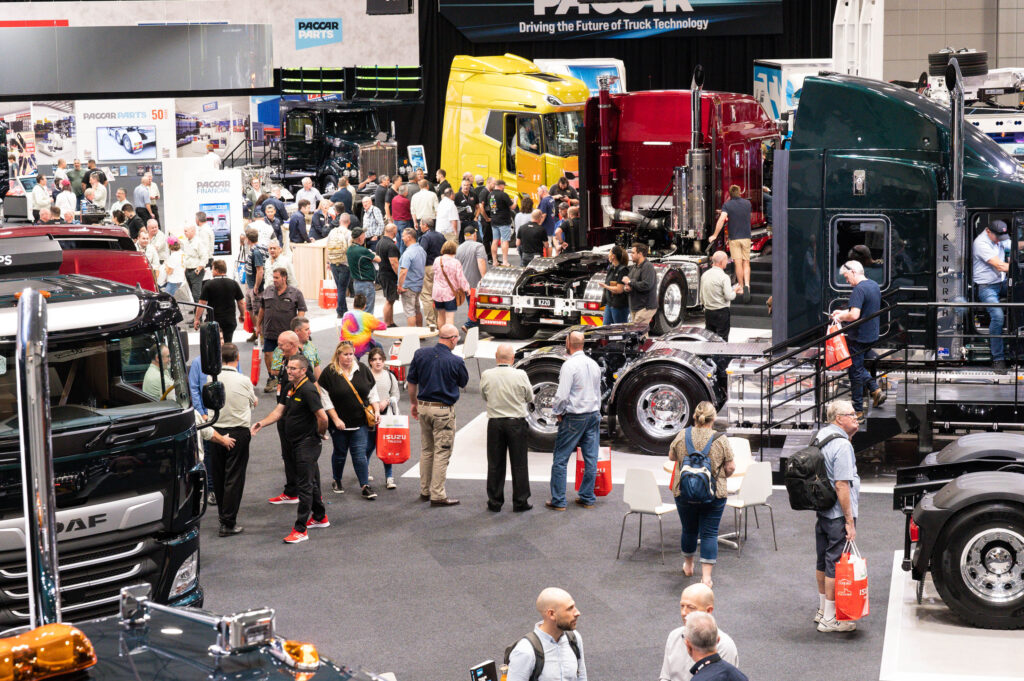
As well as some form of alternatively fuelled products from the majority of multi-brand manufacturers exhibiting at Brisbane – such as Daimler, Paccar, Penske and Volvo – the usual suspects of Hino, Isuzu and Iveco also showcased their visions of the future.
Home-grown electric truck converter turned full-scale manufacturer Sea Electric also had an impressively large and diverse exhibit, including the EV-converted Toyota HiLux.
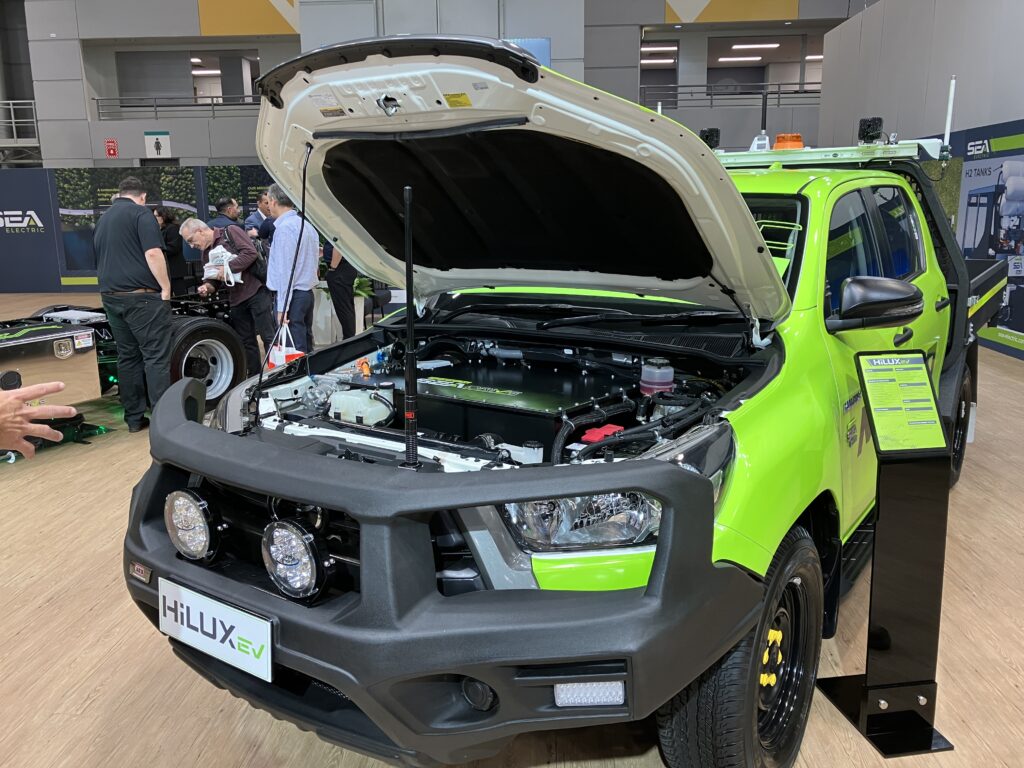
Dotted around the massive Brisbane Truck Show hall were Chinese manufacturers Foton Mobility, JAC Auto and Sinotruck as well as Chinese-built products from Australian importers EV Automotive and HDrive, as well as the Mighty electric truck that South Korean brand Hyundai assembles in China.
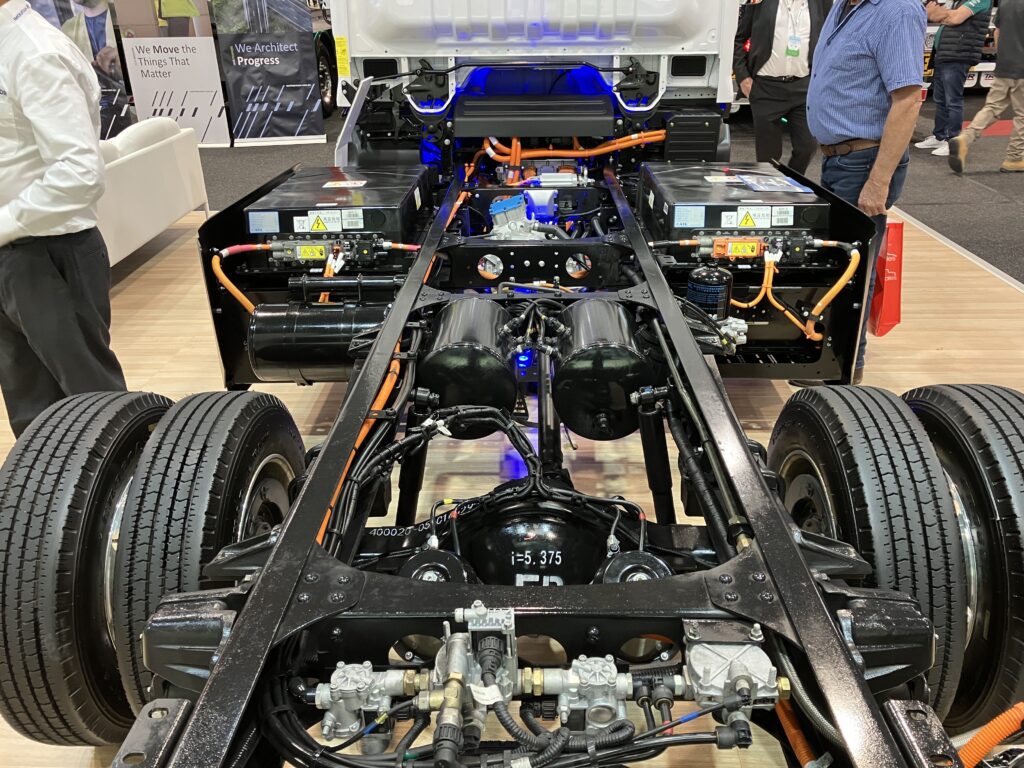
These served to give the Australian commercial vehicle sector a glimpse of just how large China’s lead in transport electrification is – and the scale of its export ambitions.
In an interview with SightGlass, Foton Mobility CEO Neil Wang outlined the economies of scale the manufacturer is able to leverage from a Chinese domestic supply chain that supports annual production of more than 600,000 electric medium-duty trucks across multiple brands.
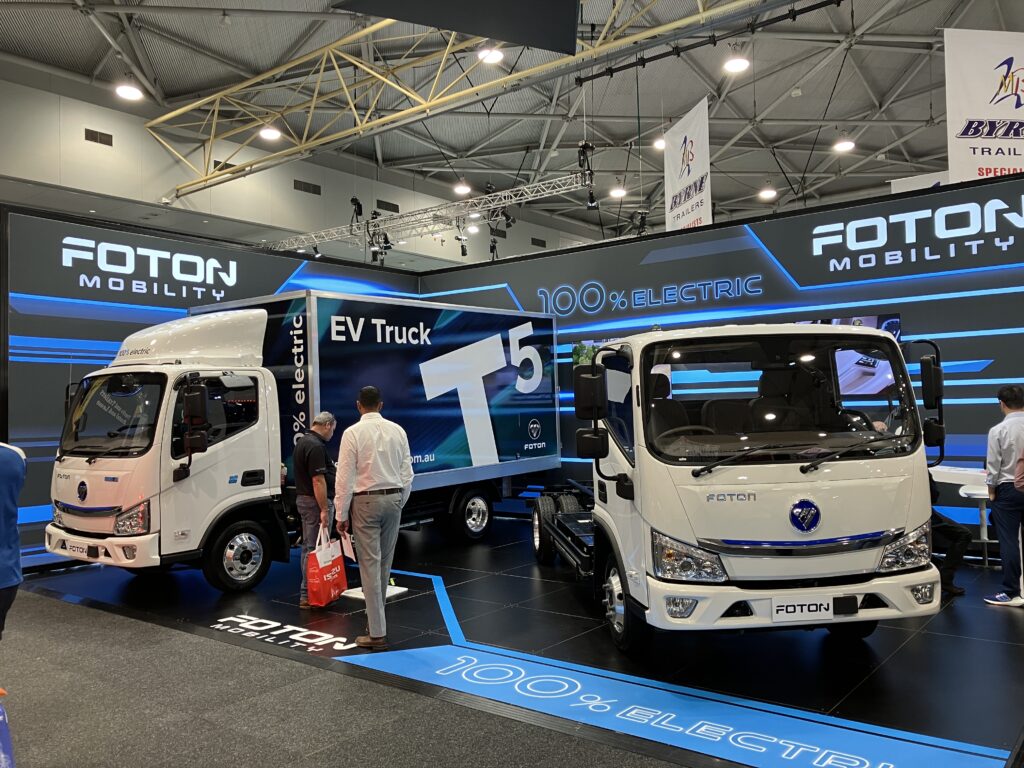
Foton alone is aiming to produce 150,000 ‘new energy vehicle’ (NEV) trucks per year by 2025 in China, a nation that already accounts for between 80 and 85 per cent of the world’s NEV truck production volume.
On the Australian market, this enables Foton to undercut all other equivalent electric trucks with its T5 model that starts from $135,000 for a 4.5-tonne GVM cab-chassis.
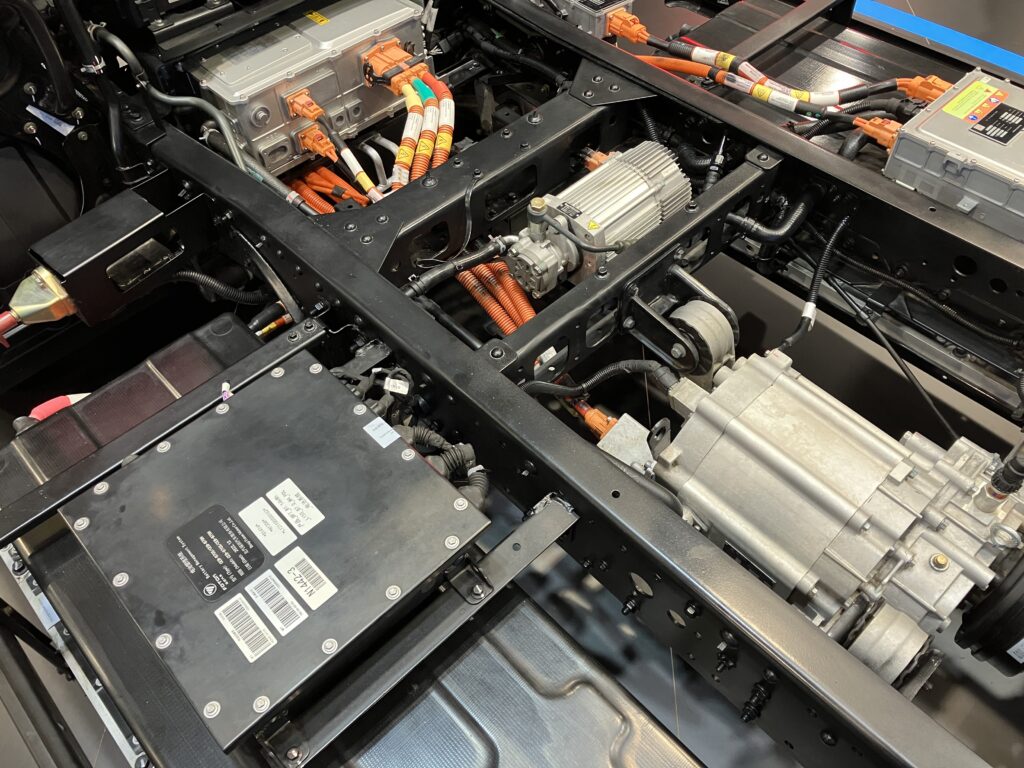
Fuso’s eCanter, the Isuzu N-Series EV and a surprise Australian debut for Iveco’s eDaily were not accompanied by pricing information at Brisbane Truck show but Hyundai said its Mighty Electric light-duty 7.3-tonne GVM truck will be priced in the region of $150,000 for a cab-chassis.
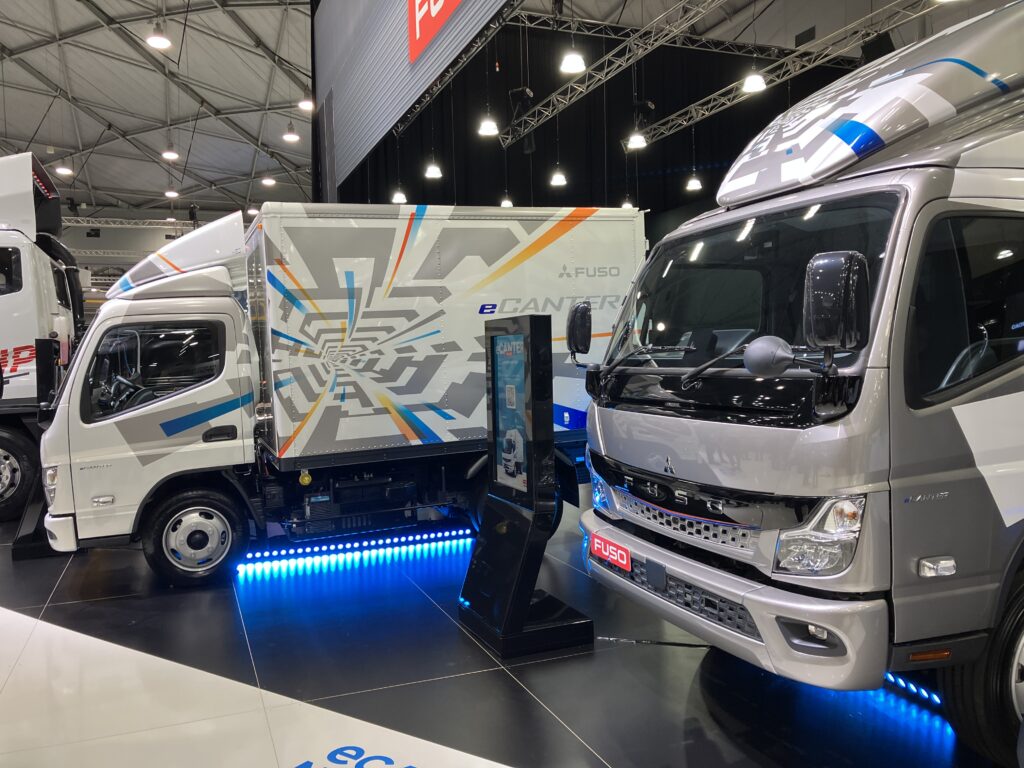
Businesses considering these electric delivery vehicles will have to crunch the numbers on total cost of ownership, though, given a diesel-electric Hino 300 hybrid with 4.5-tonne GVM is around half the price of an equivalent Foton T5 while coming from an established Japanese brand with comprehensive Australian dealer network.
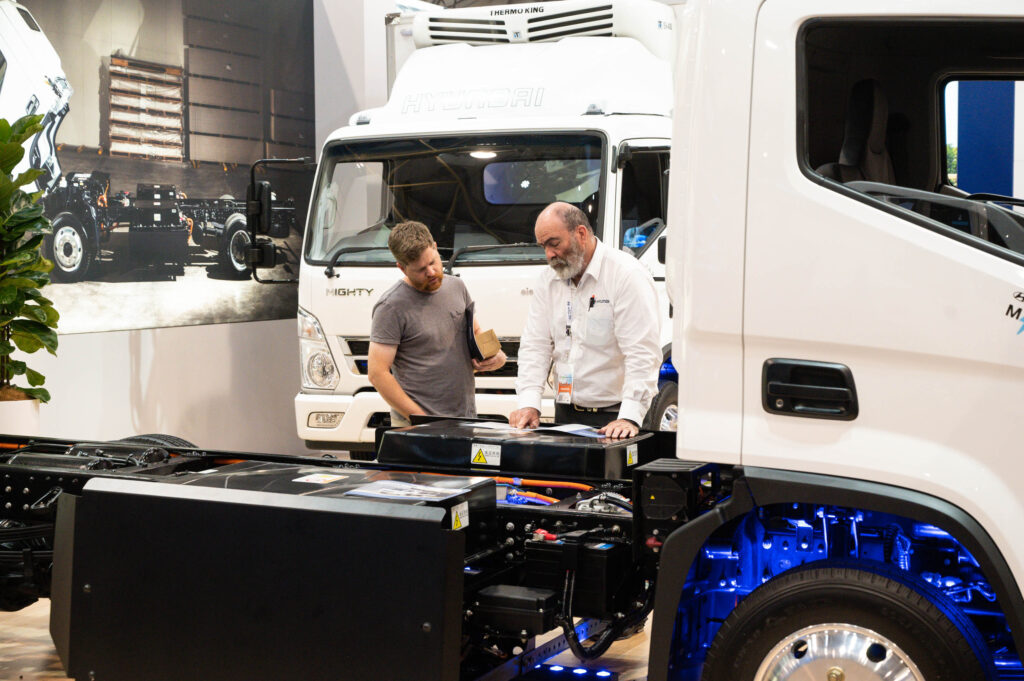
Also in the region of $150K is the all-electric, Chinese-made JAC N55 EV (4.5-tonne GVM), priced higher than the Foton but undercutting Sea Electric, which told SightGlass that prices start from around $165,000 for a 4.5-tonne GVM cab-chassis.
JAC is expanding its range with 7.5-tonne and 9.0-tonne GWM truck models, as well as a dual-cab ute that will be available with diesel and electric drivetrains.
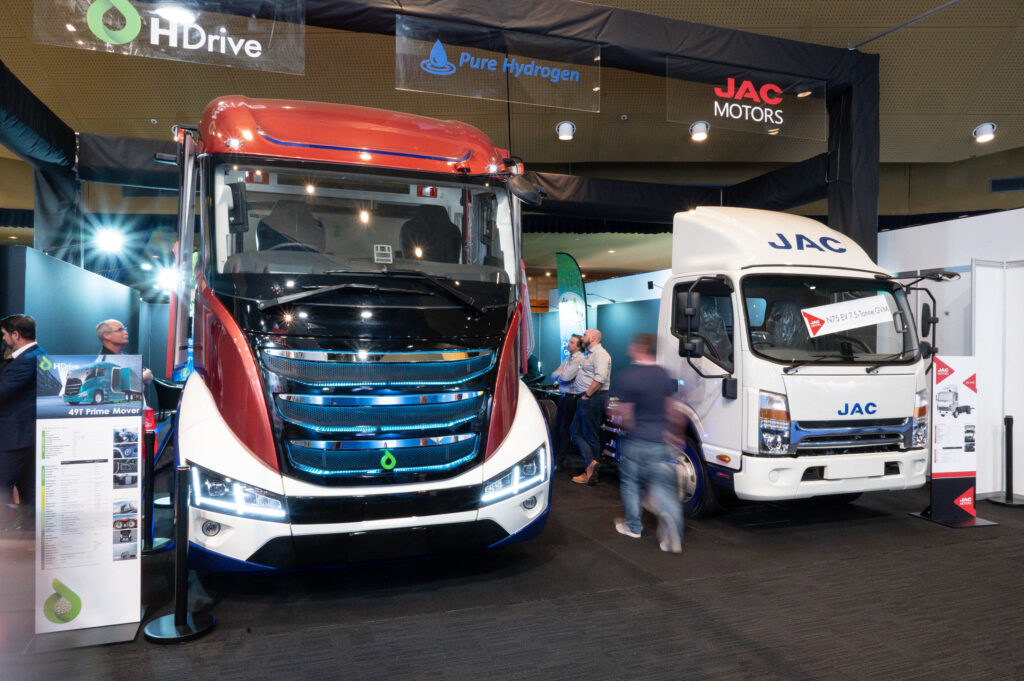
With LDV, Ford and Peugeot launching electric vans onto the Australian market in quick succession, Mr Wang told SightGlass that Foton is introducing a large electric van in the $100,000 price range to undercut those more established players.
Brisbane-based importer EV Automotive – featured in SightGlass issue 24 – returned to the Brisbane Truck Show, again displaying its EC11 model in large van and 12-seat bus formats, made by Chinese company Skywell New Energy Automobile Group and featuring R1234yf refrigerant.
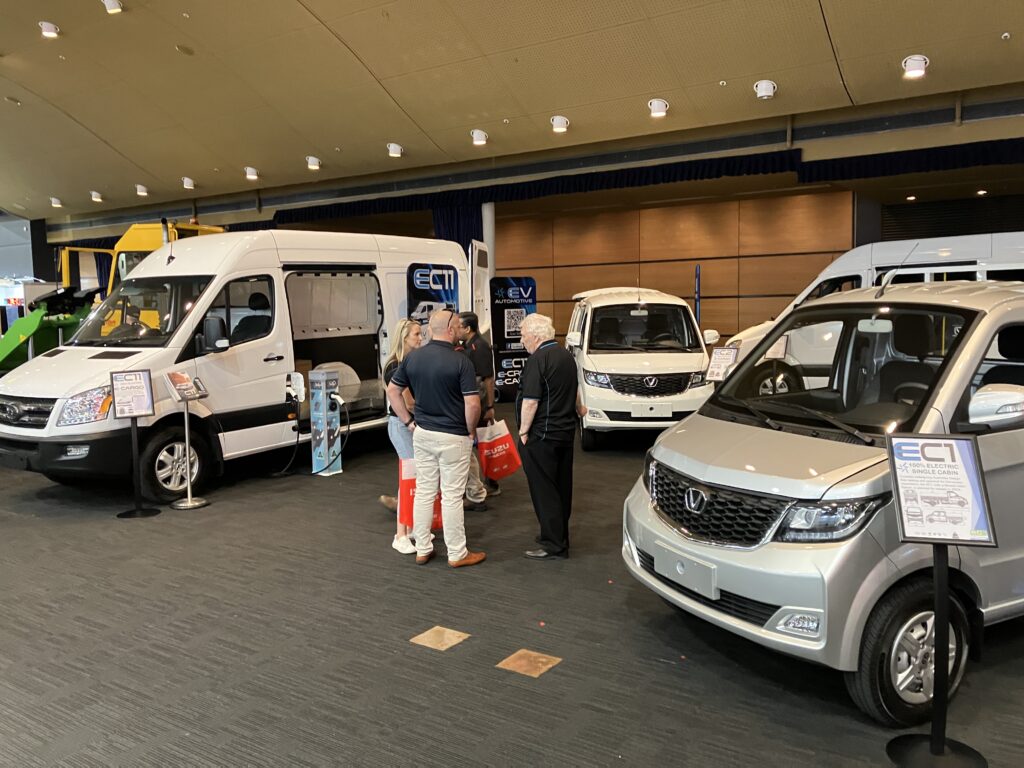
EV Automotive managing director David Potter told SightGlass the EC11 starts from $94,000, while the smaller EC35 electric compact van – similar to the Suzuki APV and produced by Chinese manufacturer DFSK Motor – will sell for around $60,000 when it arrives.
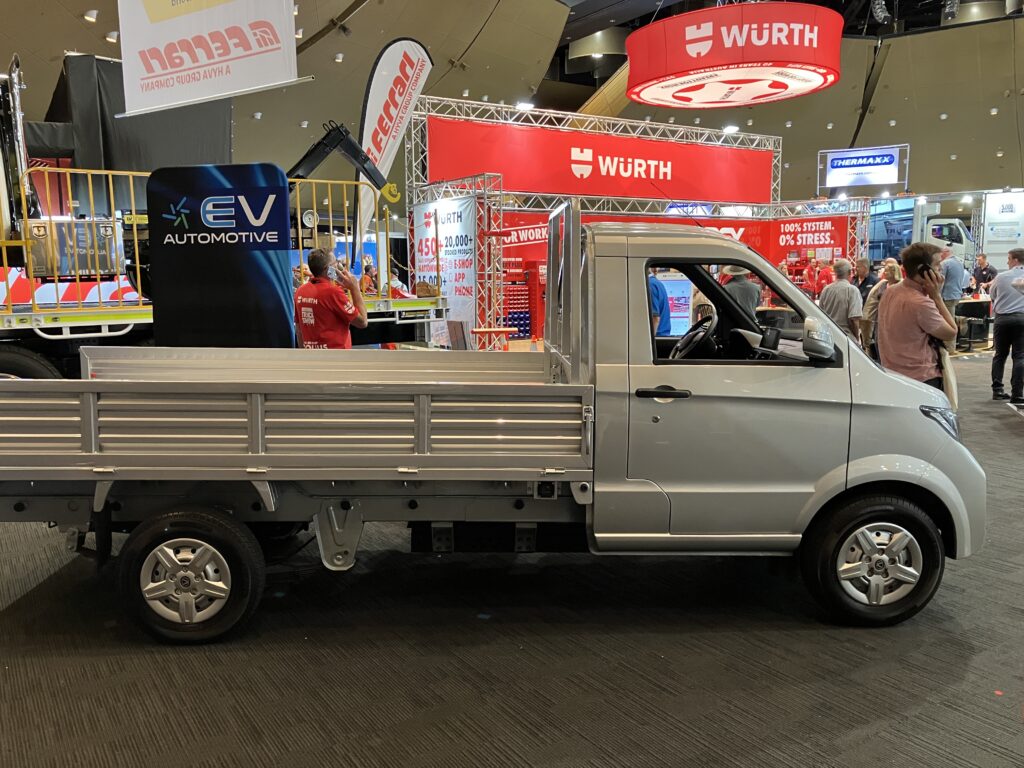
Also in the pipeline are single- and dual-cab ute cab-chassis versions of this compact model, badged EC31 and expected to sell at a similar price.
Trucking on gas
Brisbane Truck Show hosted the public debut of Hyzon’s first fully complete Australian-made-and-engineered heavy rigid truck, fitted for the occasion with a Superior Pak side-loading garbage truck body ready for use by Remondis in Wollongong.
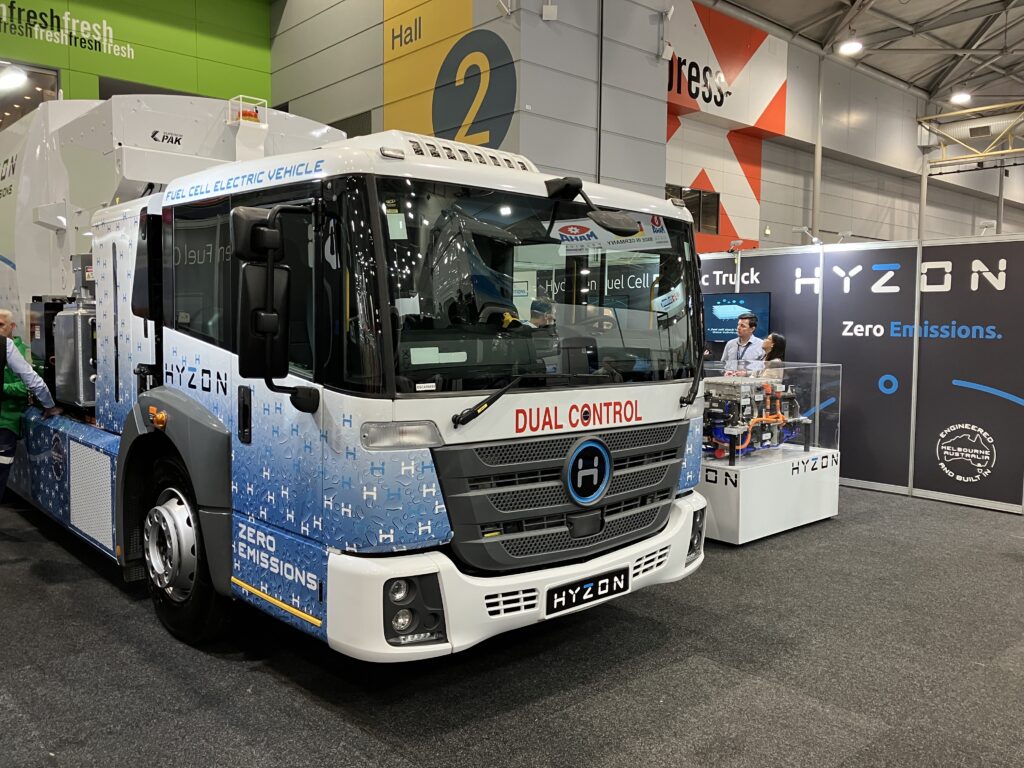
Featuring Hyzon’s proprietary hydrogen fuel cell drivetrain technology, the vehicle on display was developed and assembled at the Noble Park premises in Melbourne it shares with RACV and its towing subsidiary Nationwide Group in return for supplying hydrogen-powered recovery trucks.

Another pioneer of hydrogen was on display at Brisbane Truck show in the shape of a left-hand drive Kenworth T680 fuel-cell electric vehicle (FCEV) – of which just 10 exist in the world so far for real-world trials in the United States.
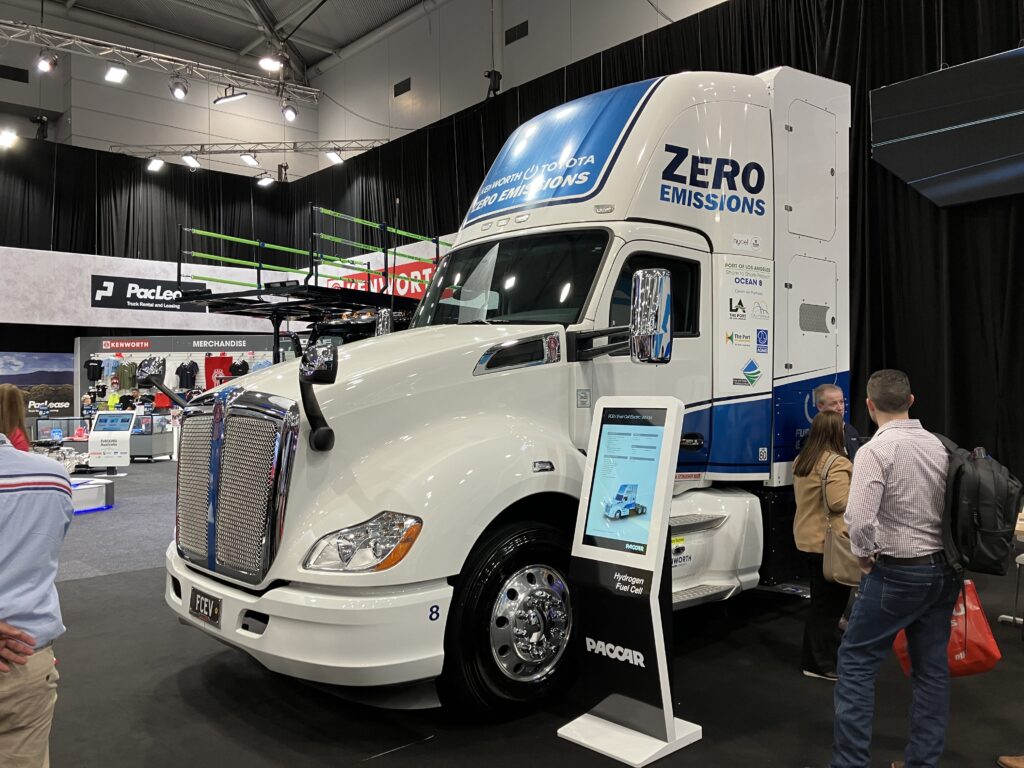
The T680 FCEV features a Toyota hydrogen fuel cell feeding energy to a 460kW electric powertrain and providing a driving range of up to 480km before a 15-minute refill of its hydrogen tanks is required.
Kenworth has also trialled this tech at the Pikes Peak hillclimb, where it scaled the famed Colorado mountain in a demonstration of its advantages at high altitude and how the torque of electric motors makes gradients effortless.
Alongside the hydrogen fuel cell Kenworth on Paccar’s Brisbane stand was a battery-electric DAF LF 19-tonne rigid truck with 260kW motor output and a claimed range of up to 280km.
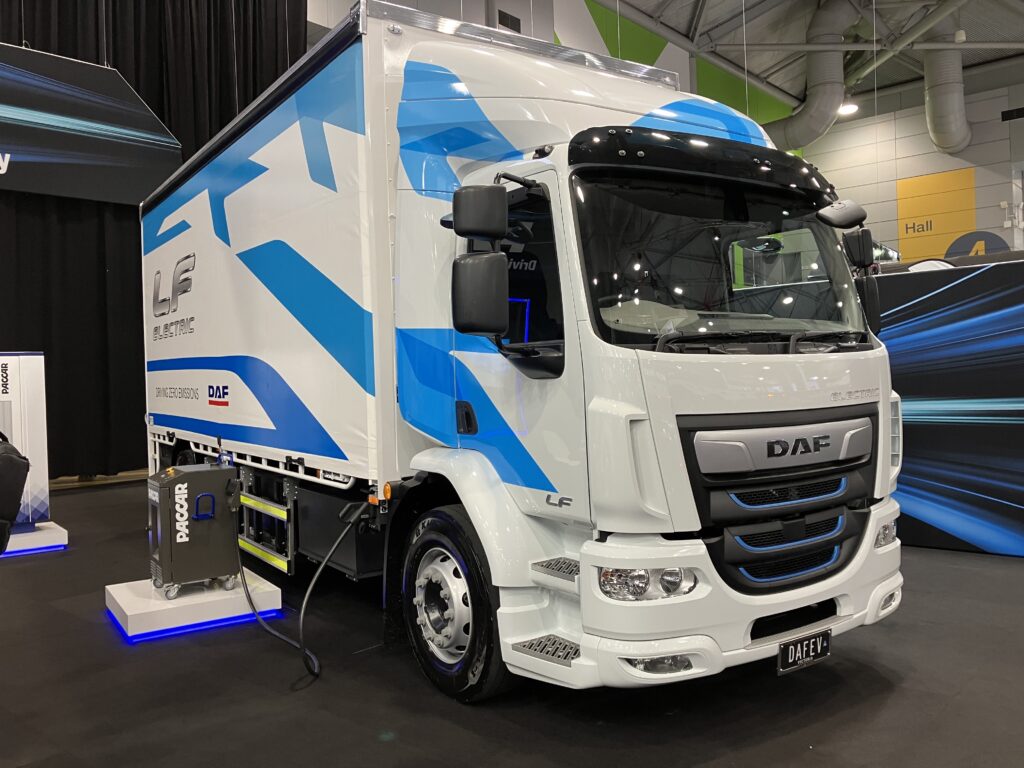
DAF has also recently revealed a version of its XF cab-over prime mover with a hydrogen internal combustion engine but we might not see one of these Down Under until the next Brisbane Truck Show in 2025.
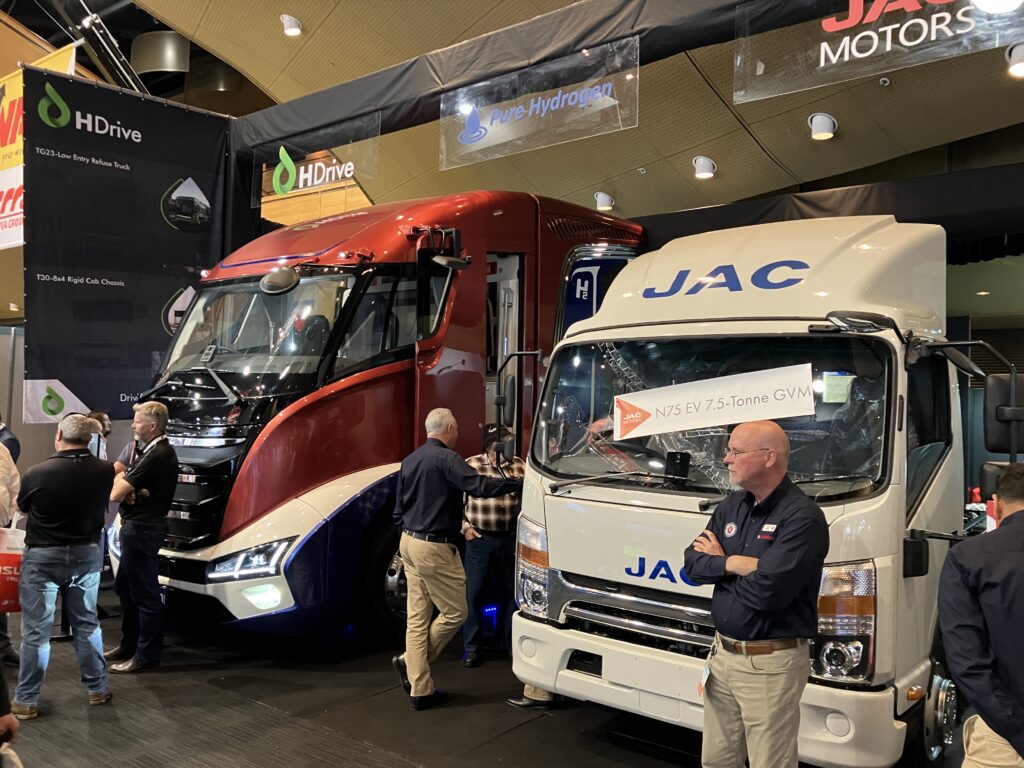
Sharing the JAC stand was HDrive, which debuted its Australian-designed, Chinese-made hydrogen fuel cell-powered HD49T prime mover at Brisbane Truck Show as well as its dystopian-looking cabless YT75A autonomous yard truck, which can tow up to 75 tonnes and be specified with electric or hydrogen fuel cell power.
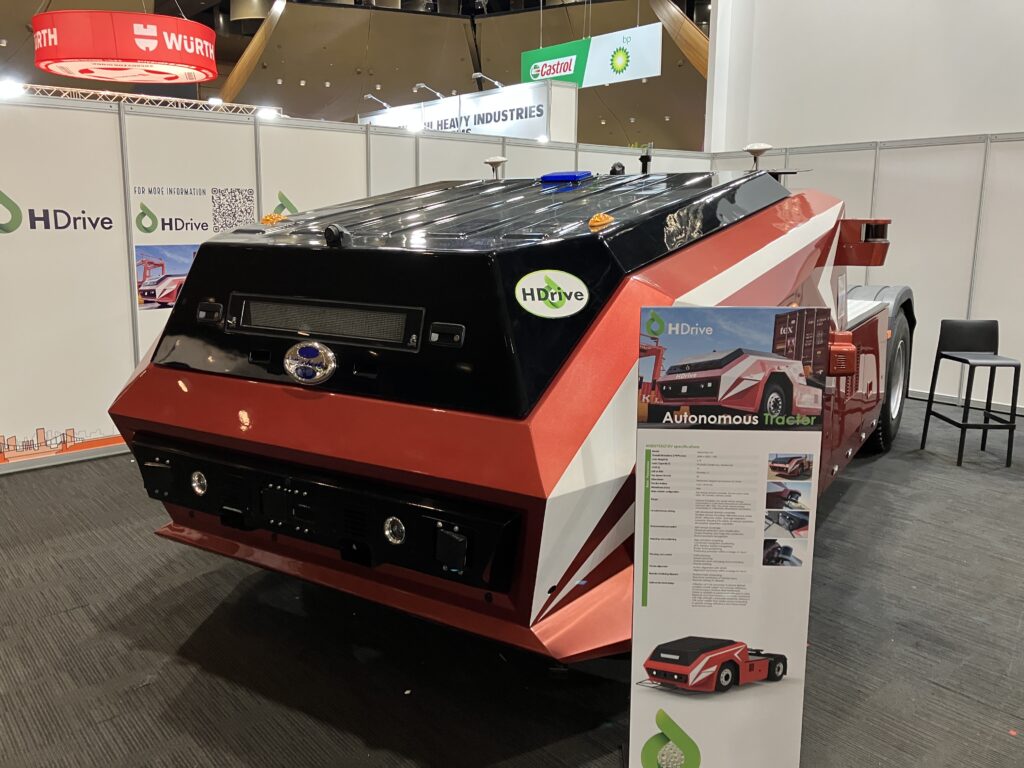
Home-grown ingenuity
New South Wales-based pioneer of battery-swap-capable prime movers and supporting infrastructure, Janus Electric, showcased its compact conversion module in Brisbane.
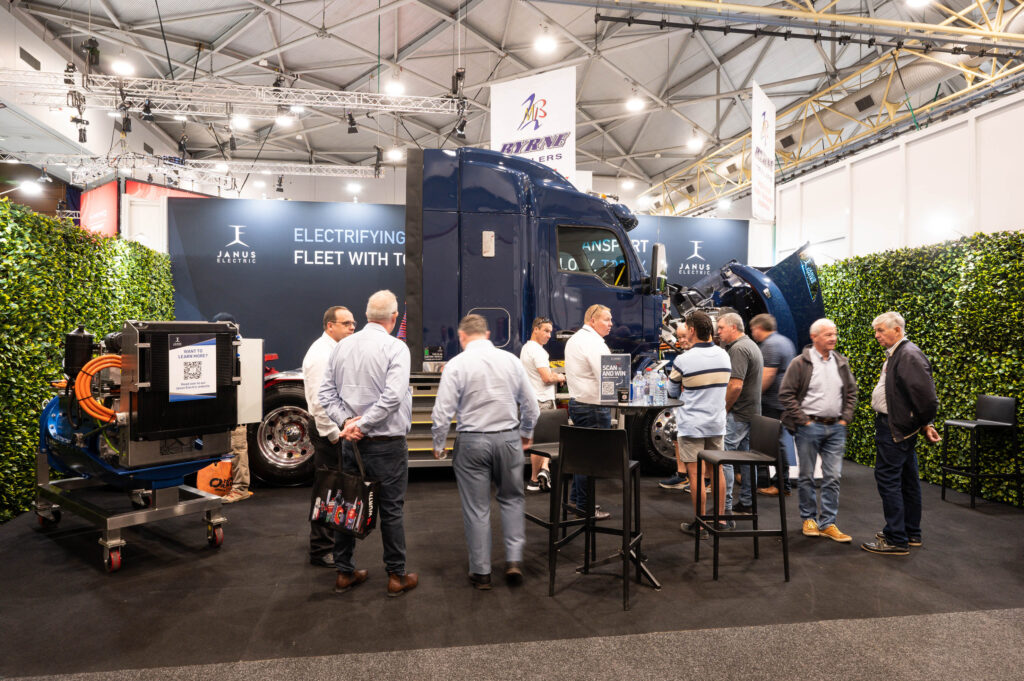
In contrast to the layout debuted at the 2021 Brisbane Truck Show where the swappable battery unit was installed on a drawer-type system accessed through the nose of the prime mover, the new design is designed more like a traditional engine swap. Directly replacing the diesel engine and ancillaries in the prime mover’s engine bay, the new integrated Janus module includes all the major drivetrain and ancillary components.
Among these are the air compressor, air-conditioning, power steering pump and thermal management for the electric motor and inverter with oversized cooling set-up designed for high-load operation in Australia’s high-ambient conditions.
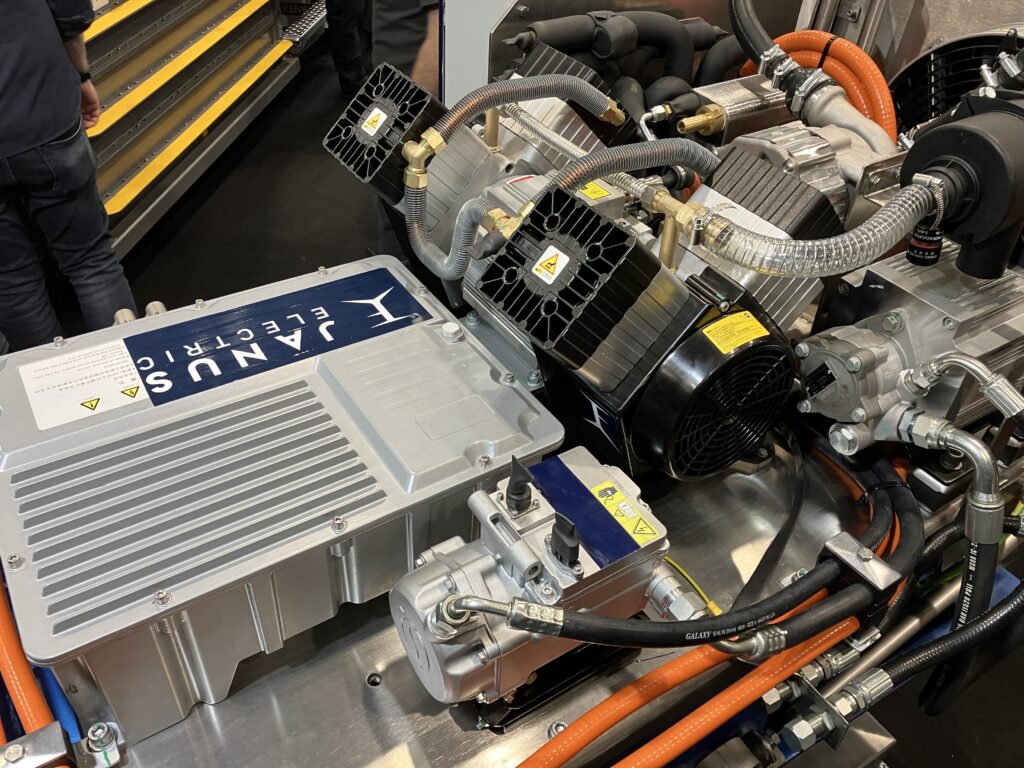
Janus also had a fully converted Kenworth T610 prime mover on display, rated to haul up to 110 tonnes and with exchangeable battery packs in place of its diesel tanks.
According to Janus Electric general manager Lex Forsyth, the company can convert most prime movers manufactured after 2010. He said it already has Freightliner, Mack, Volvo and Western Star conversions under its belt, as well as the Kenworth on display.
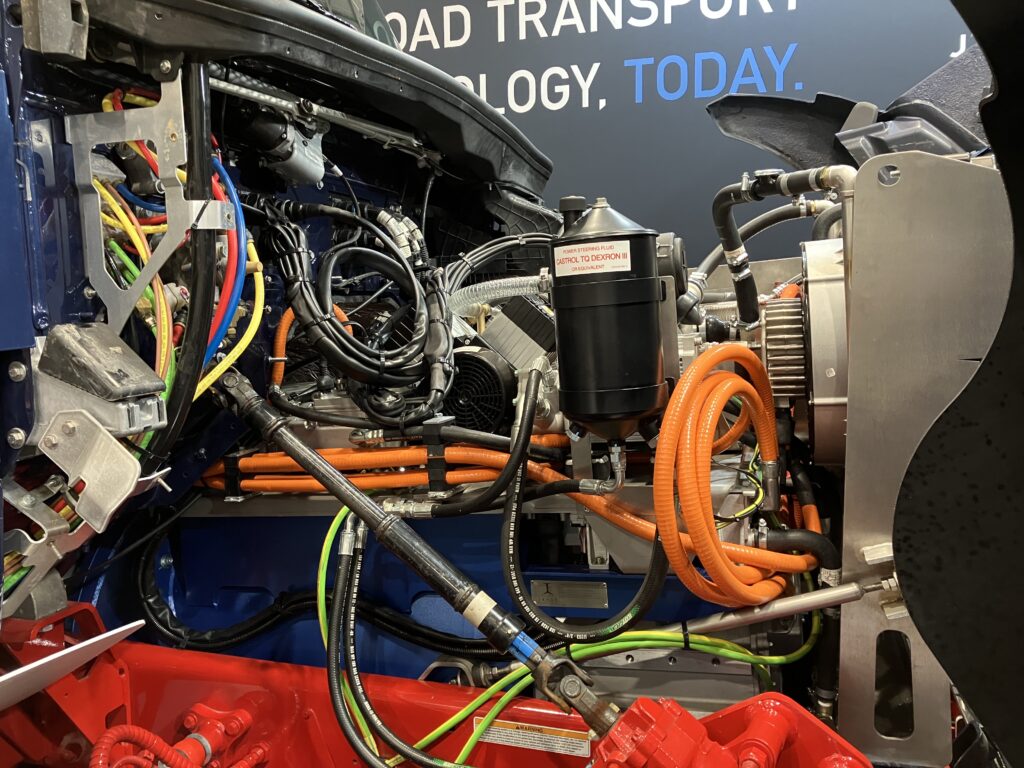
A Volvo that hauls a 175-tonne triple road train is the heaviest-rated vehicle Janus has converted to date.
Mr Forsyth said a single trailer combination would generally have a battery range of 400-500km depending on the payload, how many axles, wind resistance, payload and driving style.
Also, regenerative braking makes a huge difference for heavy trucks.
Mr Forsyth said that around 25 per cent of the 40MWh consumed so far by a Janus-converted forestry truck – while covering 18,500km with loads of up to 68.5 tonnes of timber on a 24-hour duty cycle – had been harvested from regenerative braking.
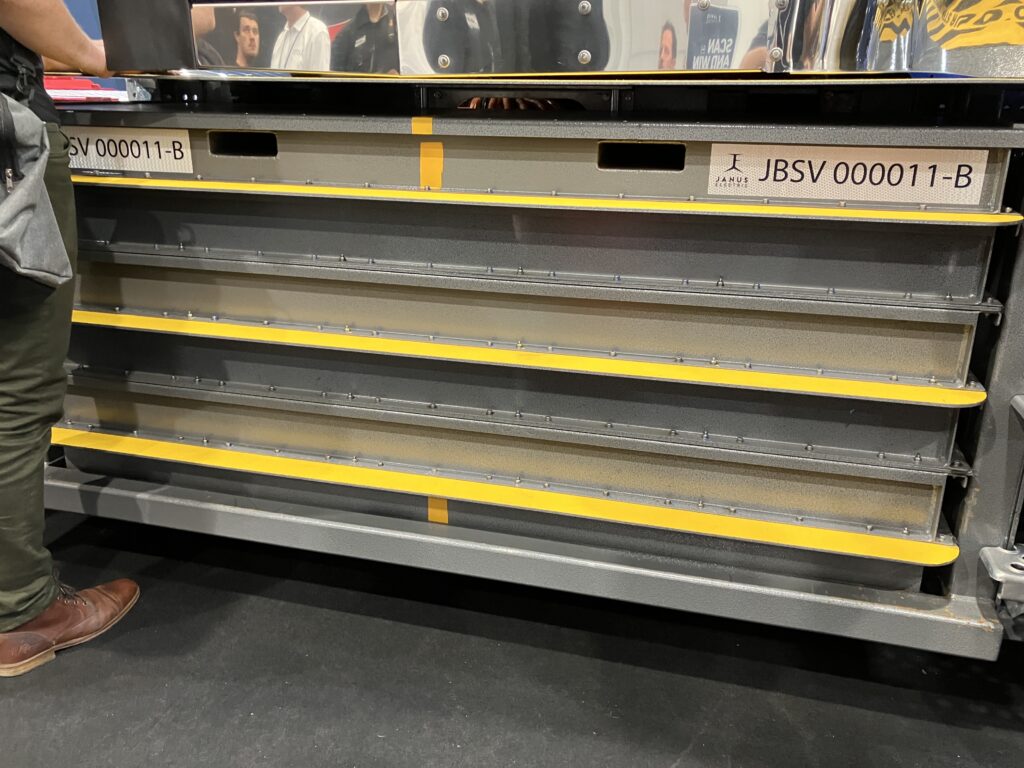
Even more impressive was Mr Forsyth’s claim that a trial with Bunnings in metropolitan Brisbane had found regenerative braking contributed 50-55 per cent of energy due to operating in urban and suburban traffic conditions.
Fortescue’s ‘infinity train’ project in Western Australia will use this principle to harvest energy from loaded wagons travelling downhill to the port, then use this to power the empty train back up to the mine site for reloading.
Mr Forsyth said the South Australian forestry truck was able to operate around the clock because the Janus “hot swap” battery exchange process takes just four minutes using a forklift and that the battery packs themselves take around four hours to charge, meaning they are ready when the trucks become low on juice.
Another Australian-founded pioneer of commercial vehicle electrification, Sea Electric, had an example of the electric-converted Toyota HiLux it is offering to mining fleets in partnership with systems integrator Mevco.
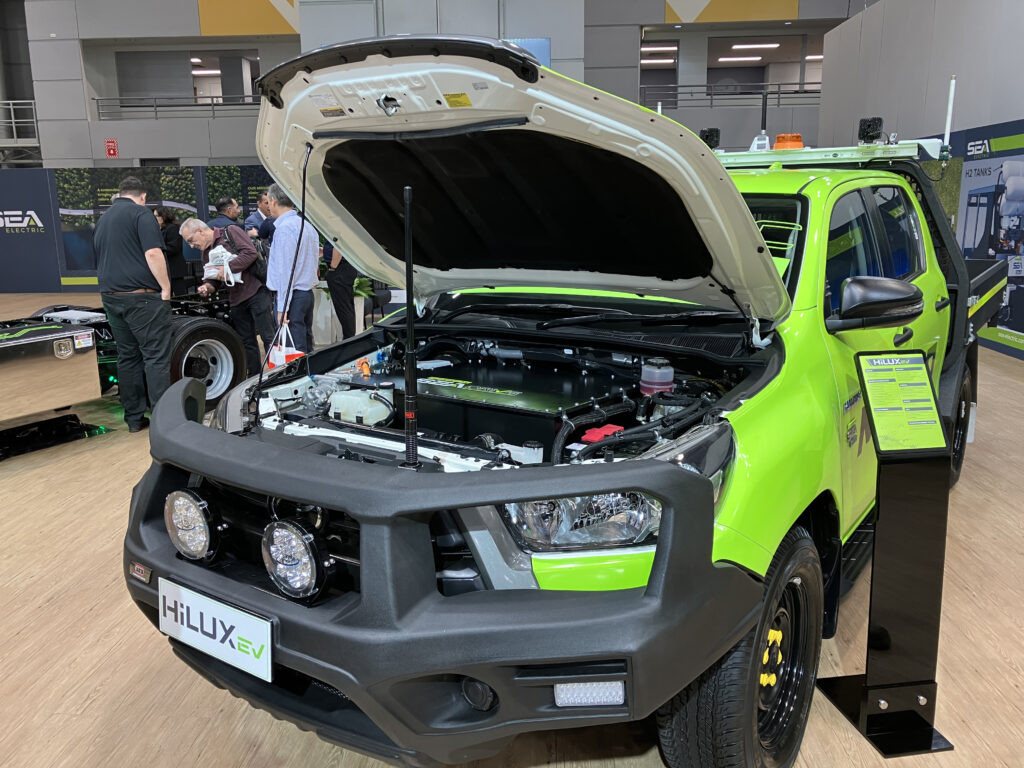
Sea Electric was early to the zero-emission party, starting with electric conversions of existing light- and medium-duty trucks before graduating to full manufacturer status by building Sea-branded electric trucks in Australia based on Hino knock-down kits and going global with a base in the United States where it is working with Mack and other big brands to convert prime movers, school buses and delivery vans.
The company’s next step is to create a hydrogen plug-in hybrid – an increasingly popular technology as featured in the previous edition of SightGlass – that adds a 45kW hydrogen fuel cell to its latest Sea-Drive 250 powertrain for extended driving range in heavier duty-cycle applications with minimal impact to payload.
More talk of hydrogen hybrids
In a surprise Australian debut, Iveco shipped one of the first right-hand drive versions of its eDaily from Italy for the Brisbane Truck Show, where it confirmed a range of up to 300km was possible from the 140kW/400Nm electric van, which can be configured with up to three battery packs with up to 111kWh of energy storage.
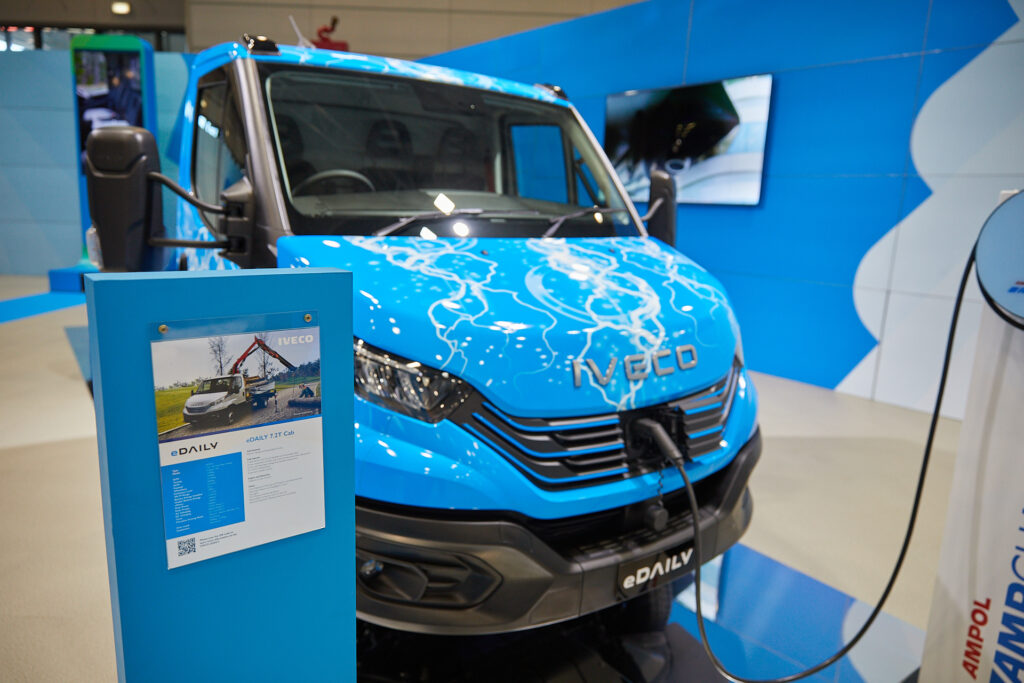
European Iveco customers are already trialling the eDaily and the company plans to do the same in Australia over the next couple of years.
An Iveco representative also told SightGlass that as a part of the Stellantis conglomerate, the company has access to the hydrogen hybrid technology used on the group’s smaller vans, and that this would be particularly beneficial to the type of usage for some customers of the big eDaily.
Isuzu brings the heat
Just weeks after launching the N Series EV in Japan, Isuzu Australia brought an example to the Brisbane Truck Show, where it confirmed plans for an Australian model line-up with trials later this year with last-mile delivery customers ahead of a general rollout in late 2024.
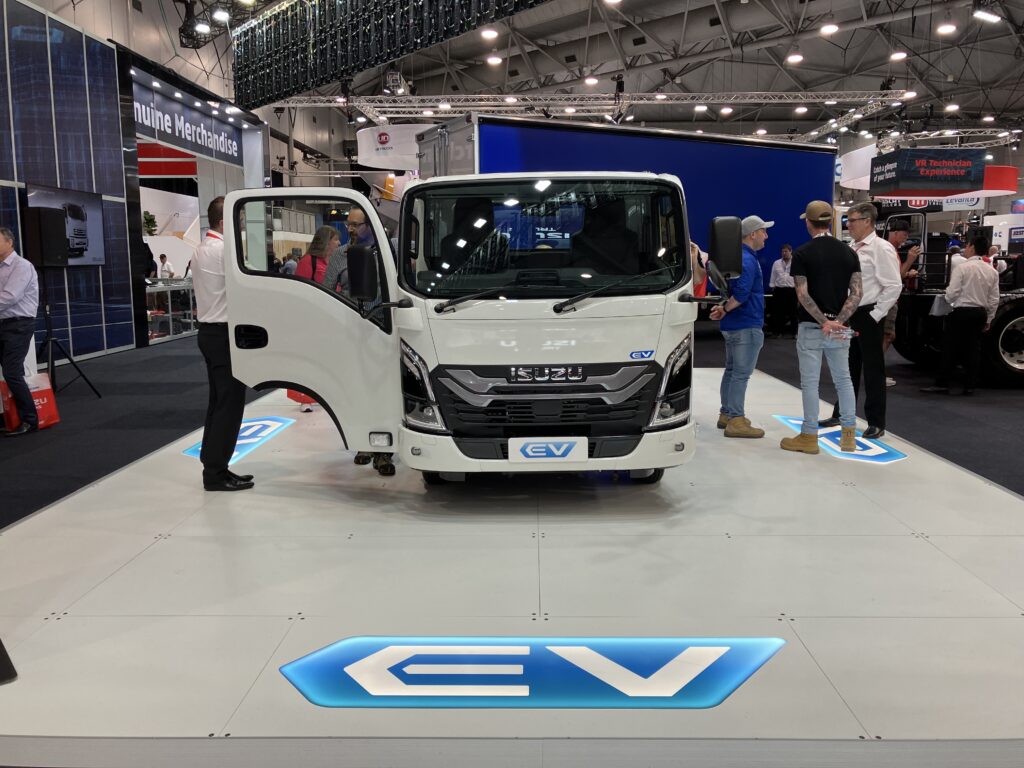
Depending on GVM and application, Isuzu will fit either three or five 20kWh batteries to the modular platform, with the electric motor configurations from 110-150kW – all with 370Nm.
Crucially, Isuzu made a point of telling Brisbane Truck Show crowds that its truck has a heat pump for greater efficiency in low-ambient conditions –something its competitors lack (and some even have no form of active battery thermal management).
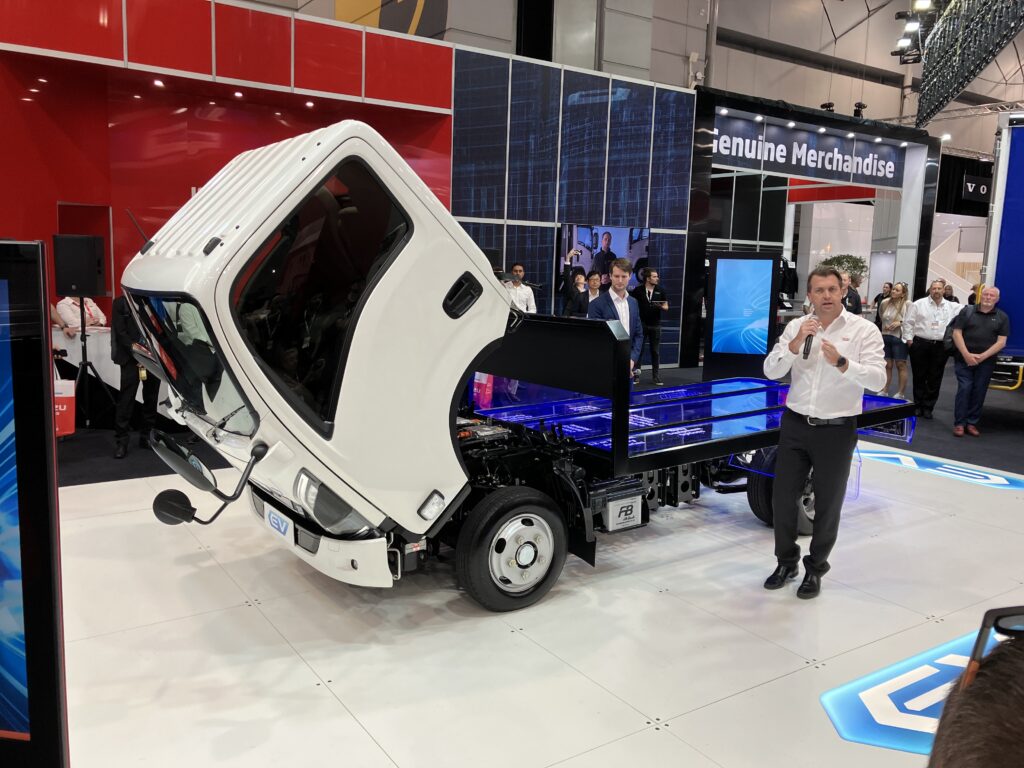
SightGlass spotted representatives from Isuzu Ute Australia – a separate business to Isuzu Australia – making a bee-line to N Series EV and, when collared for questioning, they joked that given the N-Series and D-Max/MU-X share the 4J-series diesel engine architecture that there could be similar compatibility when it came to electrification.
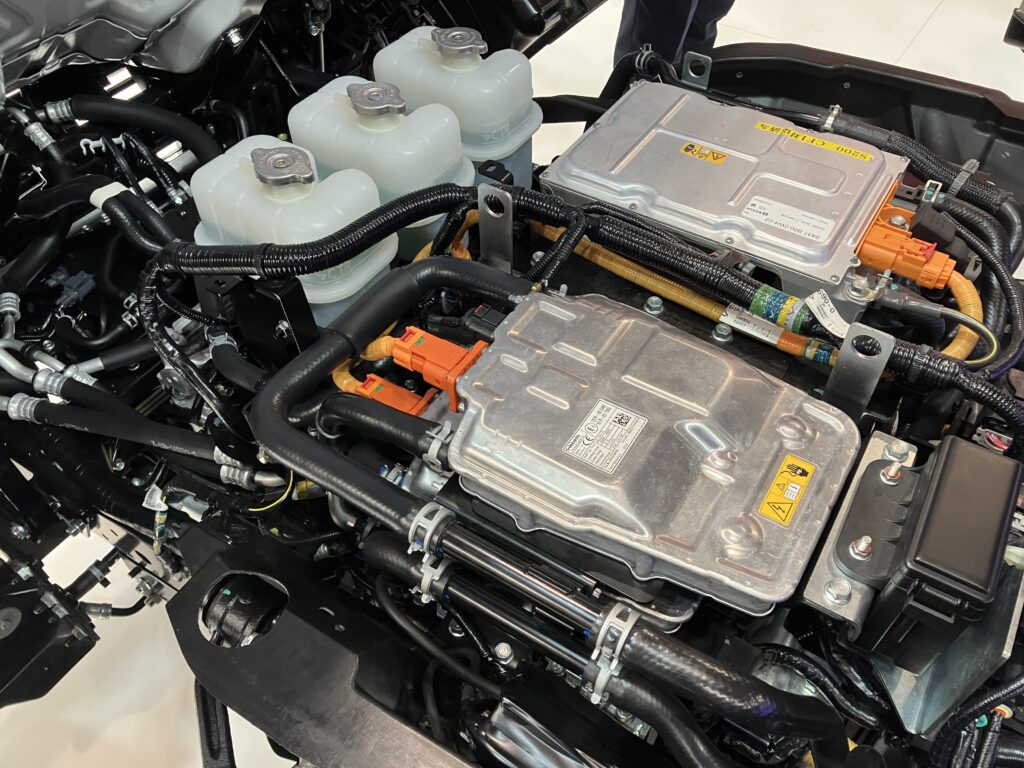
On a more serious note, during the launch of the second-generation Isuzu MU-X launch in mid-2021, Isuzu Ute’s sales and marketing director Koichiro Yoshida said on the record that “Isuzu basically has technology especially in the small truck for the electric vehicle and also some of the hybrids”.
“So we are looking for the demand in Australia of when or how, if there is demand, and whether it’s hybrid or not, and depending on that demand we need to study to introduce such a model.”
Europe’s eggs in battery basket
The vast Daimler and Volvo stands at Brisbane Truck Show highlighted a future focus on battery electric trucks, including the Mercedes-Benz eActros eEconic models that were released in Europe last year and made their Australian debut at the event.
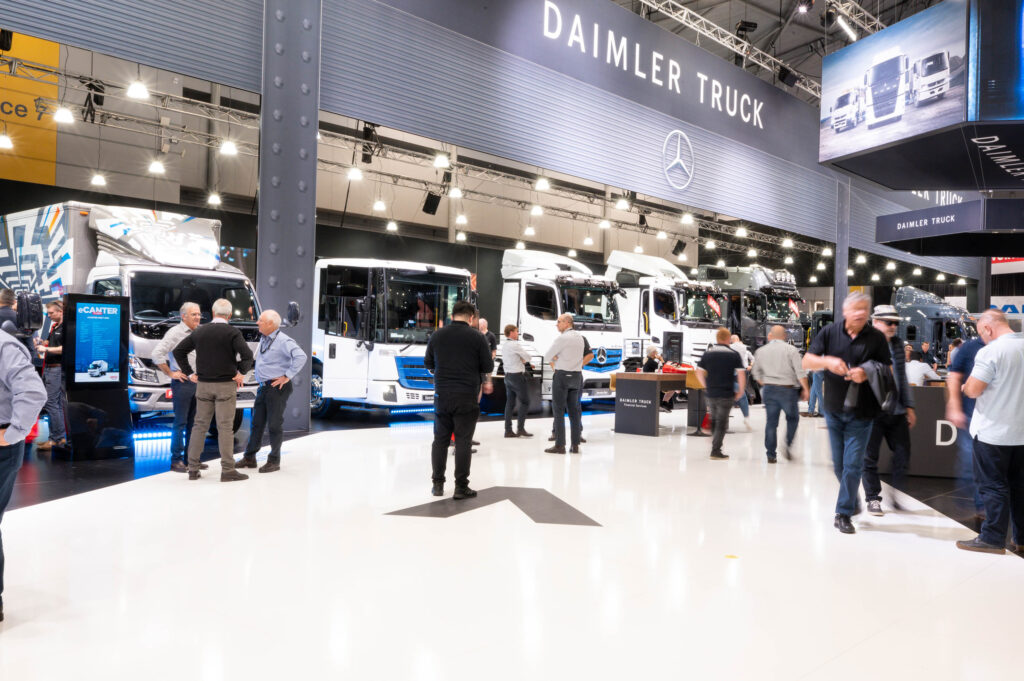
Available in Europe with three- or four-battery configurations, the e-Actros has a claimed range of up to 400km and its maximum power output of 400kW approaches that of the most powerful diesel Actros variant.
Focused on the refuse market, the eEconic features the same powertrain as the eActros, which given the early operating hours and disruptive noise pollution associated with rubbish collection trucks, quiet models like the eEconic could quickly prove popular.
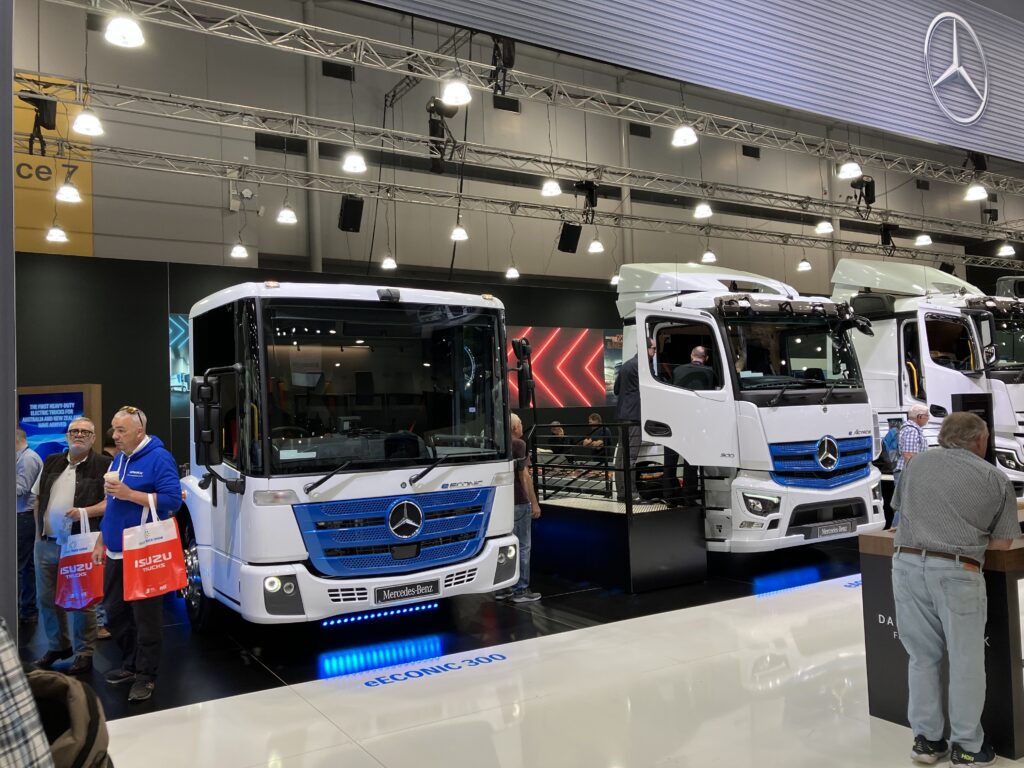
Both models are about to undergo evaluation in Australia but general launch dates are not yet confirmed.
Beating Daimler to the punch with medium-duty FL and FE electric trucks already on Australian roads, Volvo also used the Brisbane Truck Show to for the local debut of its heavy-duty FH and FM.
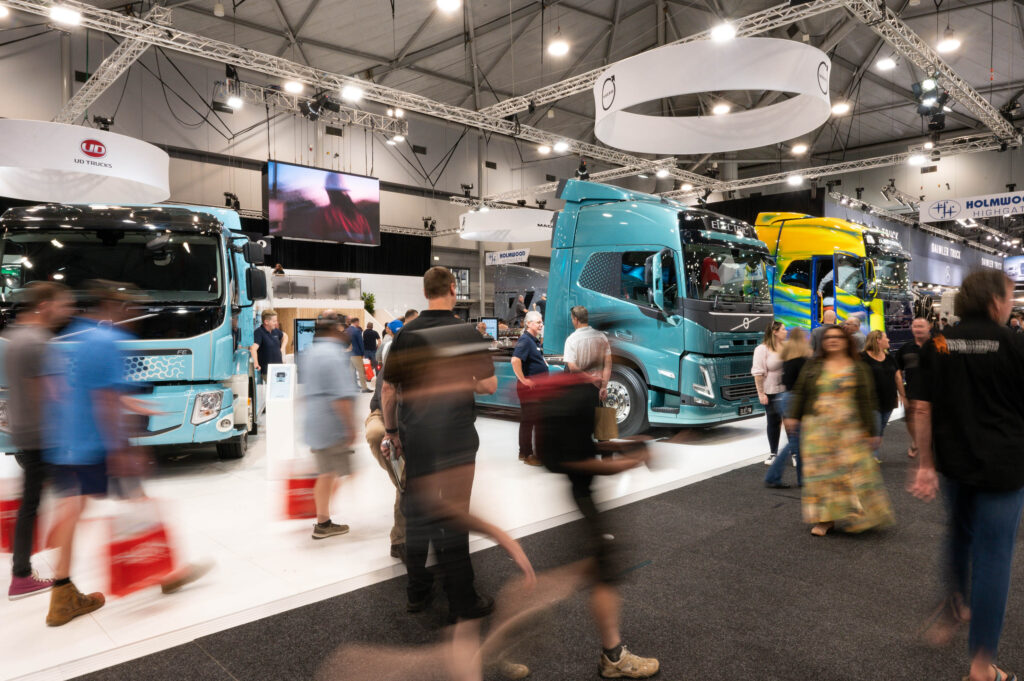
Australian truck width and axle weight regulations are holding the big Swedes back from progressing beyond local trials but with 490kW on tap and a range of up to 300km they could fit the bill for several operators here.
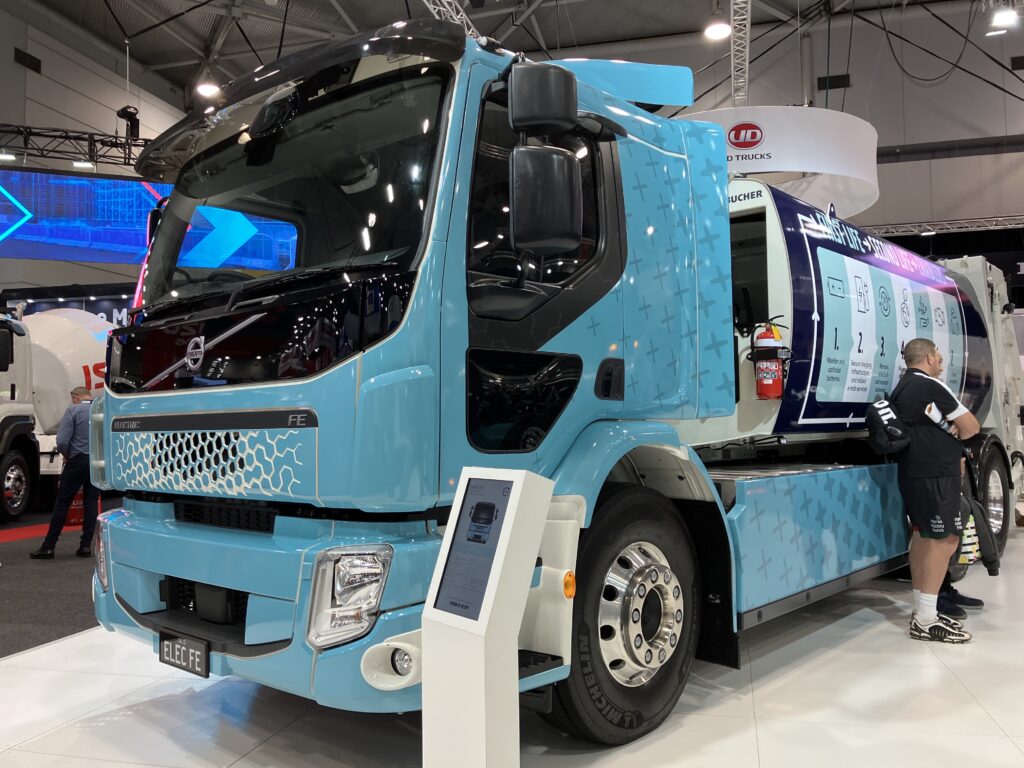
Refrigerated transport amps up
Although Carrier Transicold’s Vector eCool energy storage and recovery system is ostensibly designed for powering refrigerated trailers, it could have benefits beyond the sustainable transport of perishable goods.
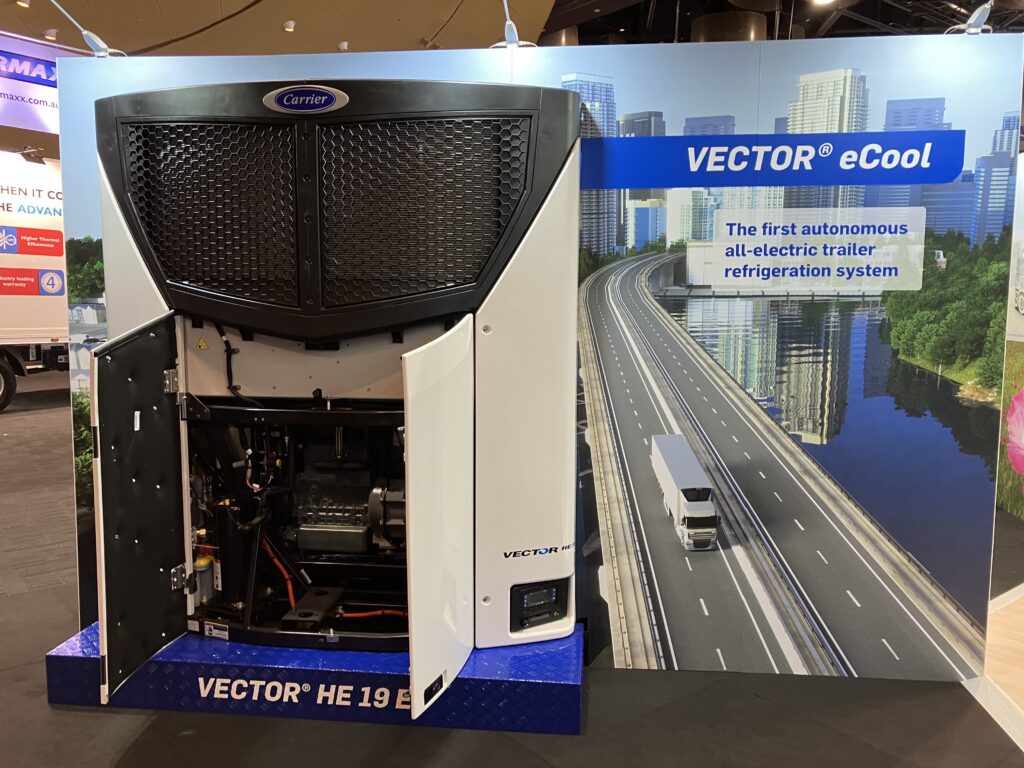
To generate energy for the battery packs, Carrier partnered with axle and trailer component specialists Valx and SAF-Holland to create what it calls a battery axle, which was on display at Brisbane Truck Show.
Depending on operating environment and refrigeration requirements, the system can recover energy under deceleration (green energy), as well as by creating some extra drag for the prime mover to overcome and turning that into electricity (grey energy) where needed.
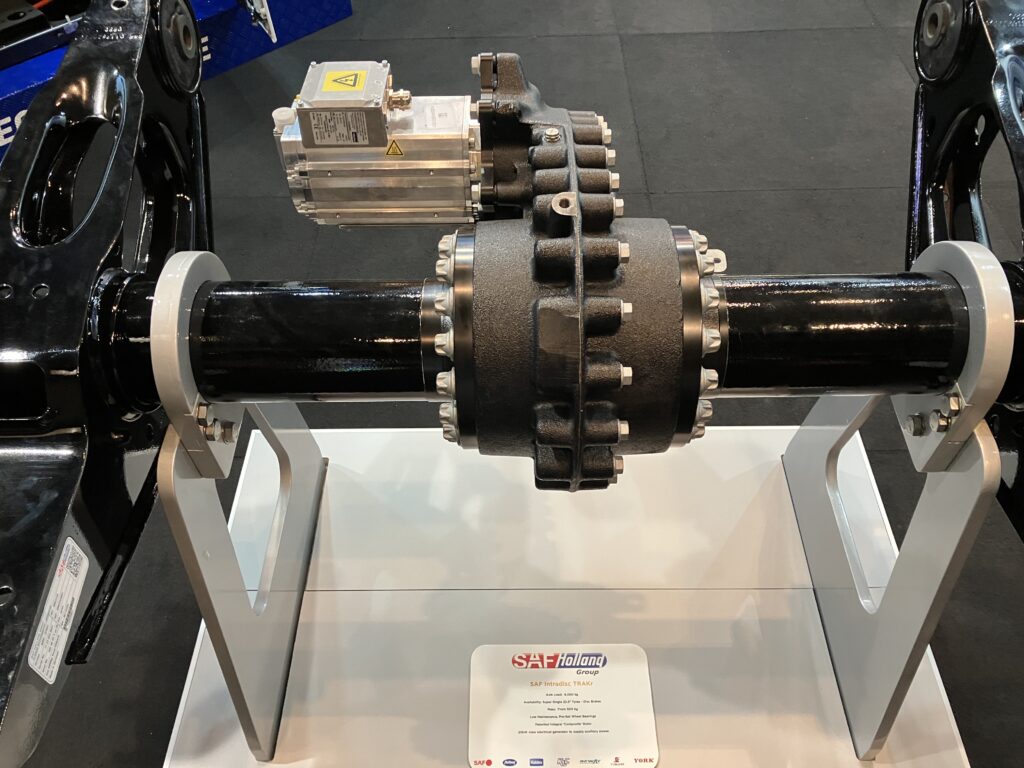
The battery pack can also be recharged via mains power so it is full at the beginning of a shift, with energy topped up during the journey by the battery axle; it is not hard to imagine a future in which caravans and other trailers incorporate a similar system to help offset the battery range reduction of towing using an electric vehicle.
Carrier claims the Vector eCool is just as autonomous as a diesel-powered transport refrigeration system, while being more efficient with reduced maintenance requirements and is quiet (below 60dB) so can be used in urban, residential and other noise-sensitive locations between 10.30pm and 7am.

